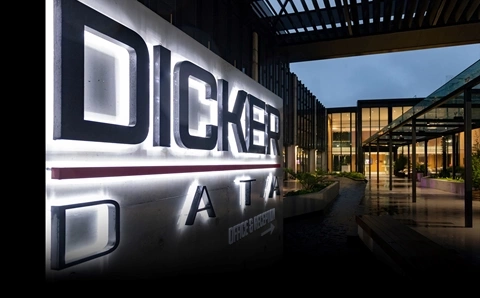Dimension Data will begin a full production rollout of Windows 7 to "close to 1200 users" next week as other Microsoft partners put their own deployment plans into gear.
DiData's general manager of Microsoft solutions David Hanrahan said the integrator had a team of up to 60 users on the early betas of the operating system.
It then grew that to a pilot of 200 users at the release-to-manufacturing of the code.
About two-thirds of the company was on Vista, courtesy of a major hardware refresh at the launch of the last Windows OS. Most remaining desktop PCs and older machines were running XP, Hanrahan said.
"I think the most positive aspect even at an early stage for those of us going from Vista to Windows 7 was there were almost no application compatibility issues at all," Hanrahan said.
Hanrahan said improved power management and battery life had been particularly well-received internally.
DiData had also trialled Bitlocker for both hard drive and USB encryption. "It's one more setting and is managed as part of the desktop rather than being a separate security issue. When you start to manage security as part of the operating system it starts to make things simpler," Hanrahan said.
Data #3 was another partner to significantly progress its Windows 7 deployment. Its Microsoft services practice manager Scott Gosling said the company had deployed the operating system to almost 500 users.
It used the lessons learned from the deployment as the basis of a national roadshow on Windows 7 deployment, which attracted over 400 customers in four cities.
"We're a bit of a test case," Gosling said.
"We retrofitted Windows 7 to our existing hardware and went as far back as the Lenovo T41s, which are circa-2004 devices.
"Nearly half of our fleet also deployed the 64-bit version of Windows 7 so we had to overcome all the 64-bit issues like driver support."
Gosling claimed Data #3 would achieve a positive return-on-investment within nine months of deployment. Part of that calculation, he said, was based on increased productivity, including faster boot and shutdown times.
Nick Sone, general manager at Ensyst, also had praise for the boot times under Windows 7, after rolling out the operating system across the partner's 55 staff.
"We upgraded from Vista and its night-and-day," Sone said.
"We did boot tests using identical machines running Vista and Windows 7. The Vista machine took four minutes to boot up while the Windows 7 one took 40 seconds."
Sone also believed Windows 7 would enable his firm to extend the life of existing laptop hardware.
"We're probably extending two-to-three year old hardware by another year or two [by running Windows 7 on it]," he said.
He also praised Bitlocker encryption and general changes to the user interface as major time-savers.
Gen-i's service line manager for infrastructure Safi Obeidullah said the integrator's professional services and IT teams - some 30 staff - had been using Windows 7 for "more than three months".
MYOB chief technology officer Jason Noorman - a Data #3 customer - also confirmed his ISV was "in the process of planning" its rollout of the new operating system.
"The majority of our operating fleet would be XP," Noorman said.
"We have a limited Vista deployment. We were similar to a number of organisations in that we didn't move to Vista due to challenges around application sociability.
"Where we've deployed Windows 7 to the IT team we've yet to find any such problems."
Data #3's Gosling said early deployments limited to the IT teams for testing were common.
"Typically Windows 7 is running in pockets at customer sites like the IT department," Gosling said. "About 30 percent of our customer base is trying it now."
Another Microsoft gold partner, Pronto Software, had deployed Windows 7 to approximately 10 percent of its "over 280" staff with intentions to expand the rollout to the rest of the company, a spokesman said.
The consumer versions of Windows 7 go on sale in Australia today.






_(11).jpg&h=142&w=230&c=1&s=1)



.jpg&w=100&c=1&s=0)
_(8).jpg&w=100&c=1&s=0)







.jpg&q=95&h=298&w=480&c=1&s=1)





